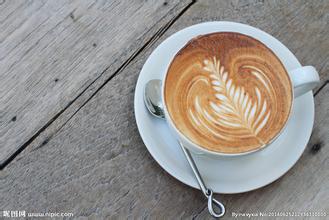How to make two cups of Guatemalan coffee at a time
In the East, Shadow Coffee Farm forms the bridge between the natural forest, adding these residual patches and providing supplementary habitat, the landscape has been severely altered by human intervention. Without these basic habitats, birds will face greater challenges in the field of shelter, feeding and nesting in addition to migratory birds, the eastern mountain forests and coffee farms have more than a hundred resident birds, such as crescent wabler (forest superciliosa), masked striped pheasant (striped pheasant semifasciata), tropical Golden Boda (tyrannus melancholy) and common Bush Donna Finch. A shadow coffee system, which cannot replicate the dynamics of natural forests, can provide many of these birds with surprisingly high-quality habitats in Guatemala, where migratory birds are found in different ecosystems on coffee farms. Legume trees are like "cuje." Gushi í N, "and" chalum "(INGA genus), used in Guatemala as the main shade tree type, are not only beneficial to coffee plants, but also to migratory birds foraging birds, attracting nectar from flowers or flowers from insects. Other species of trees provide shelter and resources for companion epiphytes of the pineapple family, orchids and ferns to improve the overall biodiversity of coffee farms, birds and other animals. Faced with severe landscape changes and shrinking habitats, more than 90 species of migratory birds have found refuge in shaded trees. In early autumn (north temperate zone), birds such as Nashville warbler (Vermivoraruficapilla), wide-winged eagle (Buteo swordfish), crested flycatcher (Myiarchuscrinitus), lovely summer Donna Finch (Piranga bayberry), Raptors and others frequent shadow coffee

Important Notice :
前街咖啡 FrontStreet Coffee has moved to new addredd:
FrontStreet Coffee Address: 315,Donghua East Road,GuangZhou
Tel:020 38364473
- Prev

Brief History and present situation of Coffee production
A brief History of Coffee production in 1742, coffee was introduced to El Salvador from the Caribbean (1740). In the mid-19th century, El Salvador's original export pillar indigo (Indigo, a kind of dye) industry received a gradual decline in the development of synthetic dyes in Europe, and coffee gradually became the main export product under the leadership of the government. In 1856, the first 693 bags of coffee beans were shipped to Europe.
- Next

Taste characteristics of Honduran flavor
Honduran coffee has a rich and mellow taste, taste is not astringent, not sour, mellow and aroma are very high, quite personality. Honduran coffee can lead to multiple levels of flavor depending on the degree of roasting. Moderate baking can maximize the sweetness of beans, while deep baking increases bitterness, but sweetness does not disappear. Generally speaking, medium baking tastes best
Related
- Does Rose Summer choose Blue, Green or Red? Detailed explanation of Rose Summer Coffee plots and Classification in Panamanian Jade Manor
- What is the difference between the origin, producing area, processing plant, cooperative and manor of coffee beans?
- How fine does the espresso powder fit? how to grind the espresso?
- Sca coffee roasting degree color card coffee roasting degree 8 roasting color values what do you mean?
- The practice of lattes: how to make lattes at home
- Introduction to Indonesian Fine Coffee beans-- Java Coffee producing area of Indonesian Arabica Coffee
- How much will the flavor of light and medium roasted rose summer be expressed? What baking level is rose summer suitable for?
- Introduction to the characteristics of washing, sun-drying or wet-planing coffee commonly used in Mantenin, Indonesia
- Price characteristics of Arabica Coffee Bean Starbucks introduction to Manning Coffee Bean Taste producing area Variety Manor
- What is the authentic Yega flavor? What are the flavor characteristics of the really excellent Yejasuffi coffee beans?

